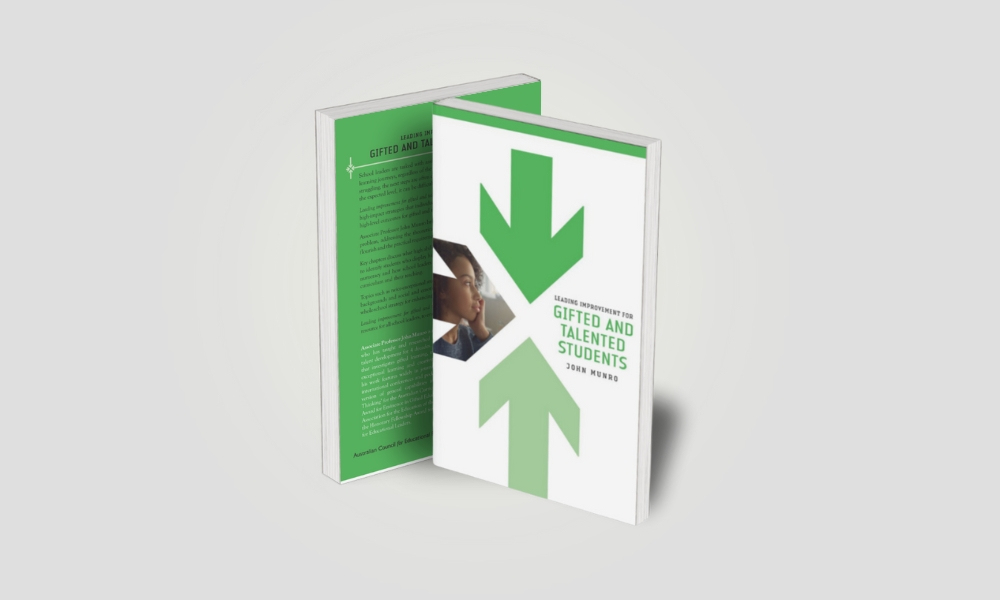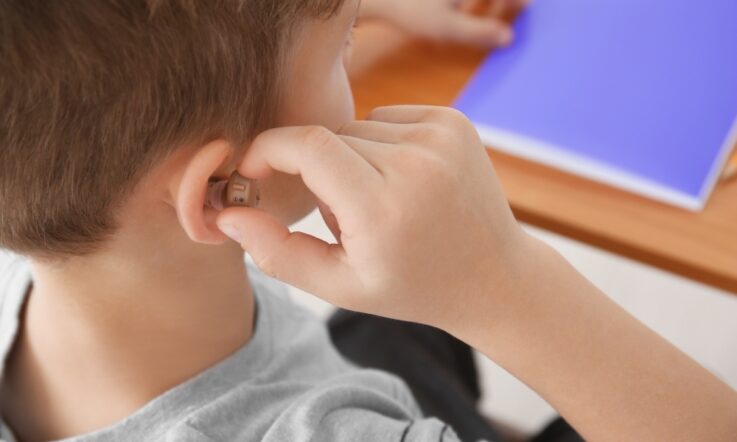In his new book published by ACER Press, Leading Improvement for Gifted and Talented Students, Professor John Munro shares high-impact strategies that can be the focus of improving high-level outcomes for gifted and talented students in school.
Ahead of the book’s publication on 1 August 2024, in this edition of Teacher’s Bookshelf, we’re sharing an exclusive extract. Taken from Chapter 5, Twice-exceptional students, it focuses on whole-school strategies for supporting students who have been assessed as being gifted but aren’t showing high-level outcomes.
The perplexity of high ability without high-level outcomes
The notion of a high or gifted learning ability without high-level outcomes is perplexing and frustrating for teachers, parents and carers, and the students themselves. They frequently ask: ‘How come Student X has been assessed as being gifted but doesn’t show it in their outcomes?’ This chapter has described several possible reasons for this. For all of the types of twice exceptionality, a student may not achieve high-level outcomes because:
- The classroom context doesn’t support them to form intuitive theories of action or scaffold them to convert these to high-level outcomes. This may include the student being unmotivated or believing that their understanding is not valued.
- Classroom teaching and context make assumptions that do not match how the student learns. The teaching doesn’t draw on the student’s advanced learning capacity and the student may feel disengaged.
- The student’s second exceptionality limits their ability to achieve these outcomes.
- The student may be reluctant to show what they know in the classroom. They may feel threatened by thinking differently from their regular learning peers.
When teachers are aware of these possibilities, they can investigate which ones are most pertinent to a particular student and modify the teaching appropriately. They may need to collect relevant information about how the student learns and investigate the conditions under which the student learns best. The content provided in the following chapters addresses this.
What your school can do now
The focus here is on how well teachers in your school understand high-ability and gifted underachievement and what it ‘looks like’ in regular classrooms. Schools and teachers need to know that a high learning ability doesn’t always lead to high-level outcomes. Some recommended follow-up activities are discussed here.
What does your school know about twice exceptionalities and how to identify them?
Collate what your staff currently know about twice exceptionalities and how to identify them. Some teachers may not be aware of what twice exceptionalities are and what they ‘look like’ in their classroom. Discuss patterns in the typical outcomes of these students and the indicative behaviours they display in the classroom. Unpack how the apparent inconsistencies in the outcomes and behaviours of these students can be perplexing for teachers and can influence the expectations teachers have for these students.
What are the likely causes of twice exceptionalities?
Discuss the possible causes of the second exceptionality and how it may limit the student’s engagement with the teaching. Examine how the second exceptionality can mask the high ability to learn and lead to the student underachieving, disengaging or withdrawing from classroom activities. Reducing the impact of the second exceptionality often requires its cause to be targeted explicitly. It is useful for teachers to identify possible ways in which this could be done, both within and outside the classroom.
Evaluate the school’s current provision for these students
When staff are aware of the twice-exceptional learning profile and its various causes, they are better equipped to evaluate what the school already does in relation to provision for these students and to speculate about how to improve this provision. Staff can identify students who display the characteristics of twice exceptionality, reflect on the conditions under which these students learn best and suggest how, in the future, they might identify and value each student’s existing knowledge and ways of learning. Staff can also reflect on how they may restrict the impact of the second exceptionality and scaffold the student to be motivated intrinsically and to build their self-efficacy.
Summary
- Some students with a high-ability or gifted learning profile also have a second learning exceptionality that restricts them from achieving talented outcomes. This can be an academic learning difficulty, a psychological issue, or they may come from a cultural or environmental background that does not match the tacit assumptions made by the teaching.
- These students are ‘twice exceptional’, ‘dual exceptional’ or ‘gifted underachievers’. Some students have 3 or more exceptionalities.
- The exceptionality can be emotional, social, cultural or cognitive and can lead to academic underachievement, social and behavioural problems and disengagement from regular classroom participation. It can mask the student’s high learning capacity and can restrict their ability to achieve high-level outcomes at school.
Leading Improvement for Gifted and Talented Students, by Professor John Munro, will be published by ACER Press on 1 August 2024. It is available to order via the link.
In this excerpt, Professor John Munro suggests collating what staff currently know about twice exceptionalities and how to identify them. As a school leader, is this an exercise you have conducted before? What did your staff know and understand well? Which areas did they need more knowledge and support in?



